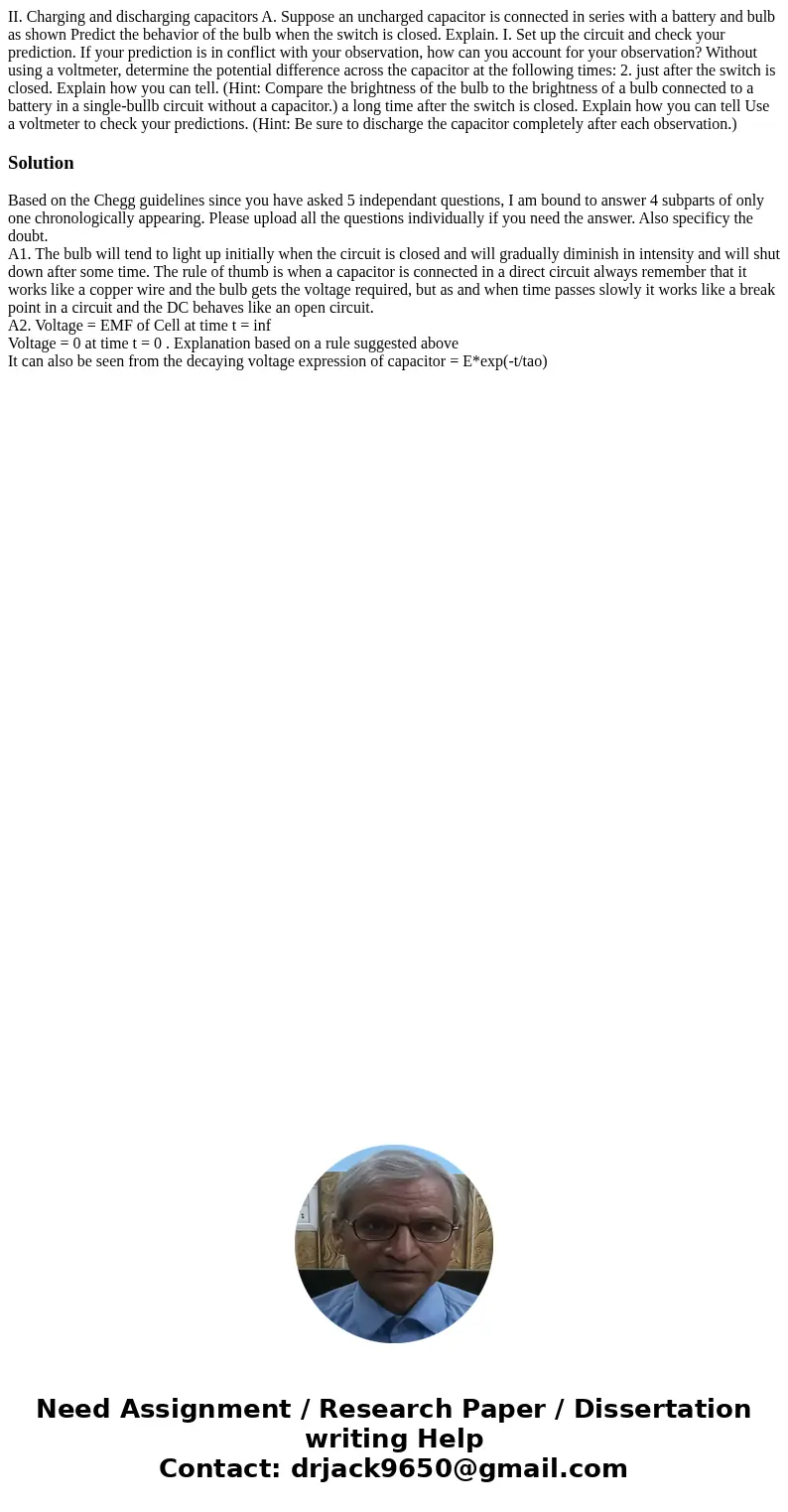II Charging and discharging capacitors A Suppose an uncharge
Solution
Based on the Chegg guidelines since you have asked 5 independant questions, I am bound to answer 4 subparts of only one chronologically appearing. Please upload all the questions individually if you need the answer. Also specificy the doubt.
A1. The bulb will tend to light up initially when the circuit is closed and will gradually diminish in intensity and will shut down after some time. The rule of thumb is when a capacitor is connected in a direct circuit always remember that it works like a copper wire and the bulb gets the voltage required, but as and when time passes slowly it works like a break point in a circuit and the DC behaves like an open circuit.
A2. Voltage = EMF of Cell at time t = inf
Voltage = 0 at time t = 0 . Explanation based on a rule suggested above
It can also be seen from the decaying voltage expression of capacitor = E*exp(-t/tao)

 Homework Sourse
Homework Sourse